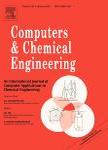版权所有:内蒙古大学图书馆 技术提供:维普资讯• 智图
内蒙古自治区呼和浩特市赛罕区大学西街235号 邮编: 010021

作者机构:Univ Lyon 1 LAGEP UMR 5007 CNRS F-69622 Villeurbanne France Univ Delaware Dept Chem Engn Newark DE 19716 USA Univ Orleans LVR UPRES EA 2078 F-18020 Bourges France
出 版 物:《COMPUTERS & CHEMICAL ENGINEERING》 (计算机与化工)
年 卷 期:2004年第28卷第4期
页 面:545-556页
核心收录:
学科分类:0817[工学-化学工程与技术] 08[工学] 0812[工学-计算机科学与技术(可授工学、理学学位)]
主 题:model predictive control distributed parameter model nonlinear programming trajectory optimization composite manufacturing autoclave curing process
摘 要:A general framework for a partial differential equation (PDE) model predictive control (MPC) problem is formulated. A first principle model of the system. described by a semi-linear PDE system with boundary control, is employed in a model predictive control (MPC) framework. Here, the aim is to determine, off-line (i.e. without process measurement), the theoretical optimal behavior of the process that will be used during on-line MPC. Input and output constraints are handled in the optimization task using a nonlinear programming method. This strategy is evaluated for the optimization of processing temperatures during the manufacture of thick-sectioned polymer composite laminates. The off-line optimization task consists of determining the optimal temperature profile, otherwise known as the cure cycle. Moreover, for this particular process, the existence of a feasible constrained optimization problem is discussed through the design of a constraint bound. (C) 2003 Elsevier Ltd. All rights reserved.